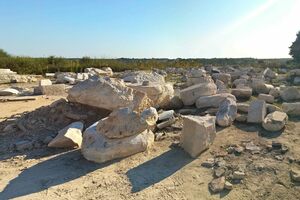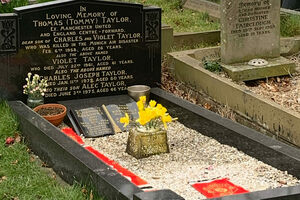Palmatis Ruins in Onogur, Bulgaria

The small village of Onogur, Bulgaria stands on land that, some 14 centuries ago, was home to a large and well-fortified city. Though there seems to be nothing left of it to this day, the strategic nature of the location makes it clear how convenient it would have been for a fortress. The site is located on a rocky peninsula, a flat piece of land spanning about 220 acres and protected from three sides with steep slope that run down to the nearest river. A defensive wall would be needed only from the fourth side to make the area completely inaccessible. In the Roman maps, indeed there is a city on this spot and it is labeled “PALMATIS.”
One of the few pieces of evidence for the ancient city are the ruins of a spacious public building, thought to be a basilica. But the walls are completely destroyed and the ground is covered with the debris of limestone fragments. The first impression is of a desolation.
After a careful inspection, it becomes clear that these fragments have belonged to old architectural structures which have once held the great roof of the basilica. Those were grandiose columns arranged in two rows, which were dividing the nave in three isles. What is left today are only their bases, which except one are still in the original spots. Everything else is either missing or scattered around, broken.
In the eastern side of the ruins lies the most intriguing part, which is also the best preserved. This is the altar area, where the floor stands slightly higher and is clearly outlined by a row of flat stones. Inside are the ruins of the atlar table and the seats for the clergy, which form a structure called a synthronon.
The ruins can hint the layout of the floor plan and give a rough impression of the size of the building. But what they cannot do is to tell what it was like to be in the basilica. With only about five percent of the building preserved today, many of the details buildings must be left to the imagination.





